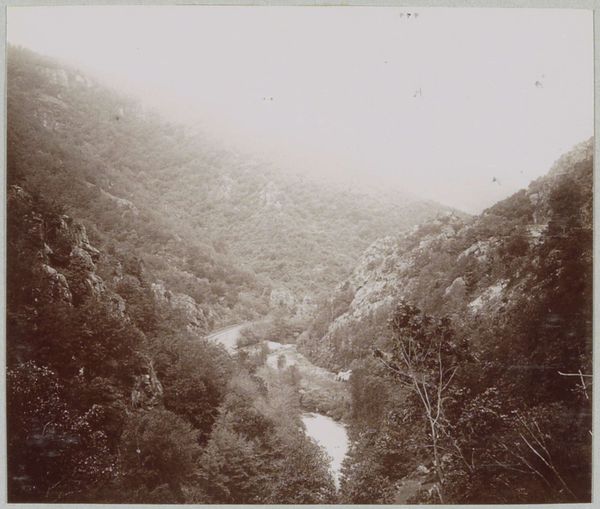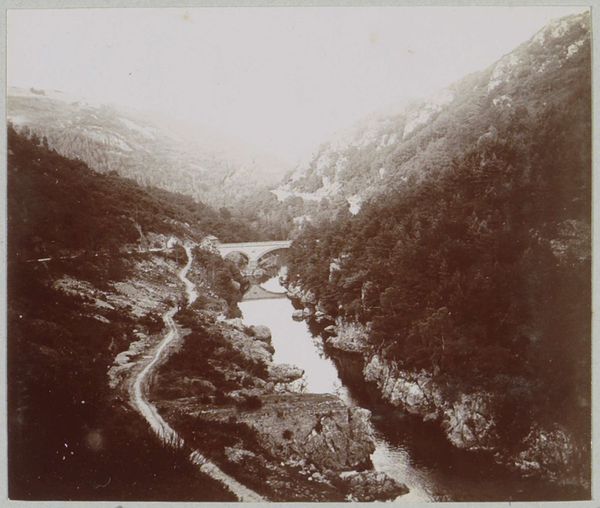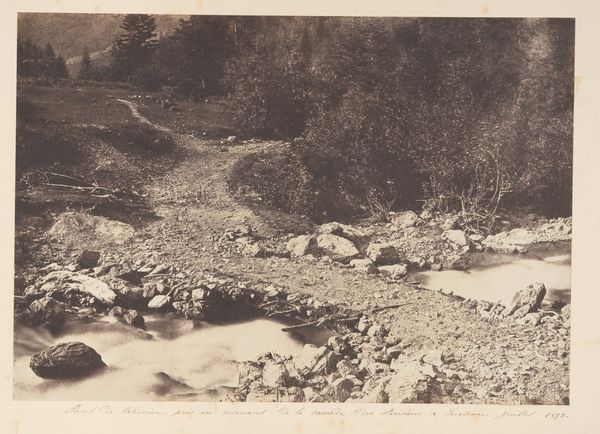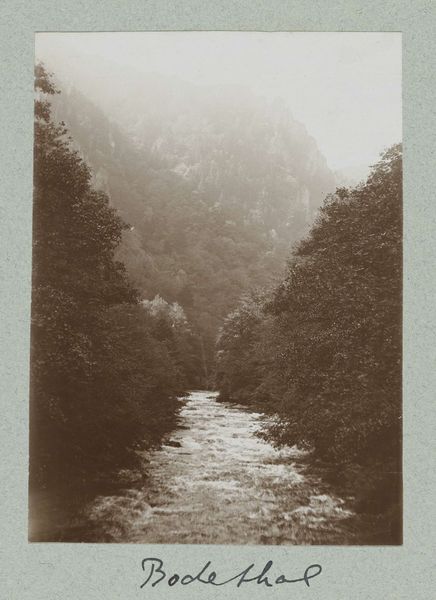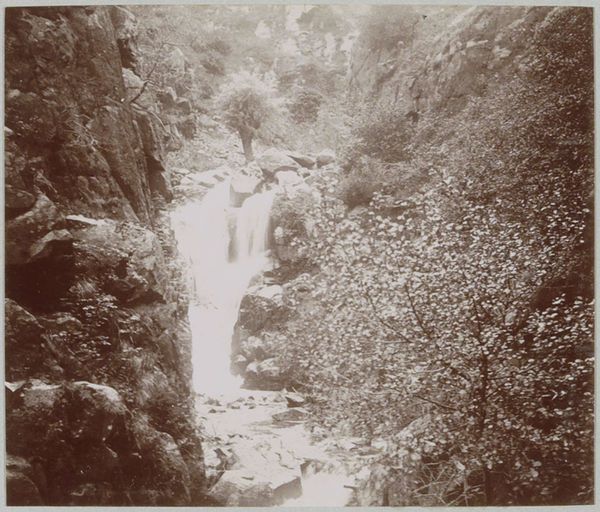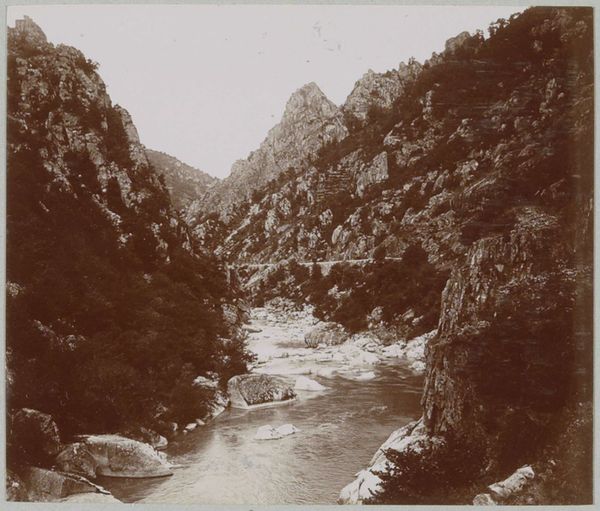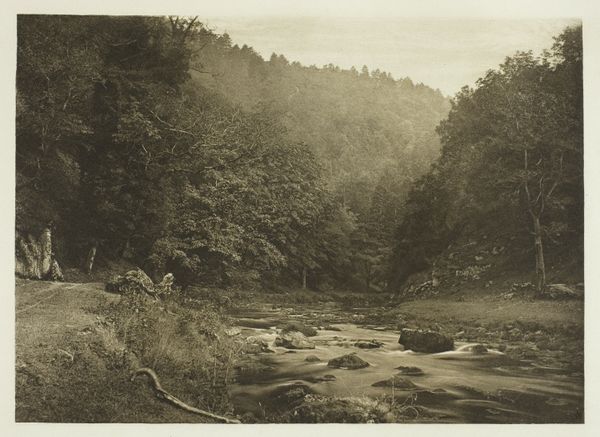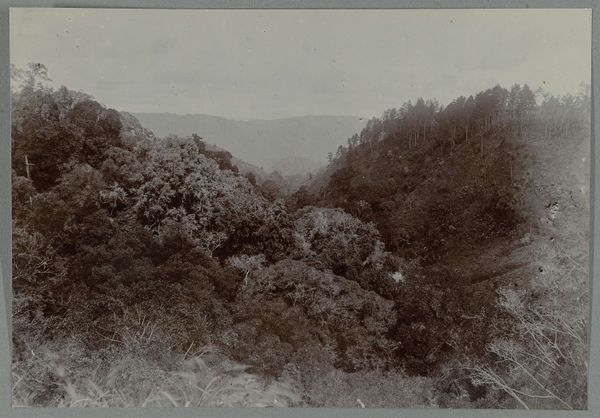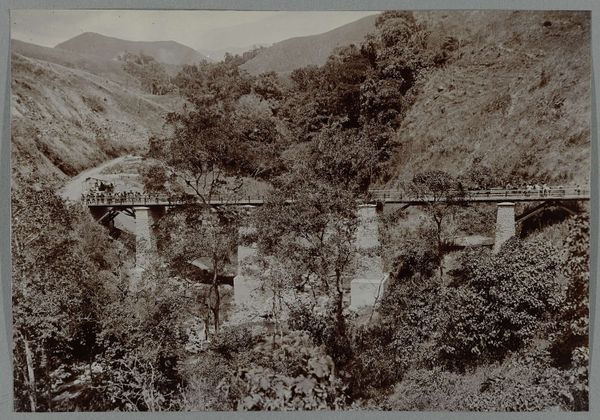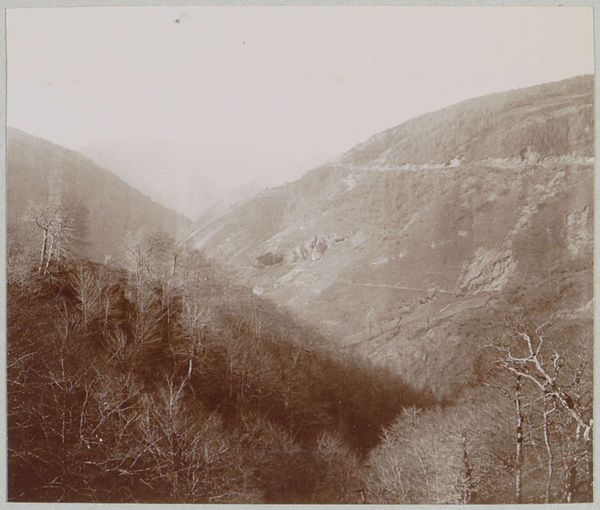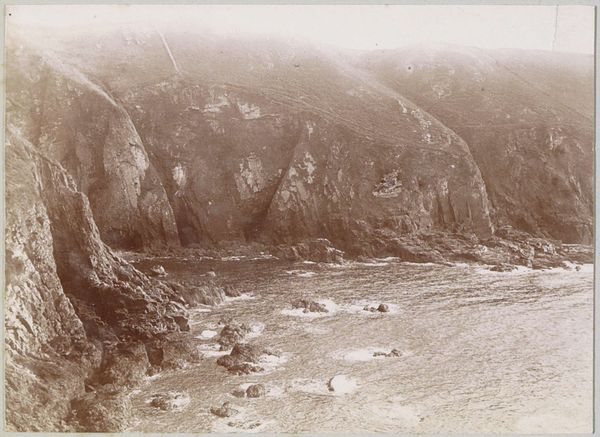
Dimensions: height 69 mm, width 82 mm
Copyright: Rijks Museum: Open Domain
Curator: Looking at this photograph, the light seems muted, almost as if veiled by mist or the photographic process itself. Editor: It feels overwhelmingly serene. A certain melancholy too. It’s titled “View of a Mountain Stream, Presumably in the Auvergne,” created around 1902. We see a landscape photography where the emphasis seems to be more on atmosphere than documentary. Curator: Exactly! What grabs me is the photographic technique at play here. Consider the photographer’s material decisions: what kind of lens, paper, and developing process they chose? These choices resulted in something we might easily classify as art rather than purely documentary evidence. This era valued artistic photography, pictorialism blurring with impressionism. Editor: Right, and it's key to look at the social conditions in which this work appeared. Travel photography was very much a privileged experience during that time; accessing remote regions demanded resources and a certain social status. It's worth questioning what these images told—or didn't tell—about the people whose lives were intricately connected to this specific terrain. This gaze frames nature in a particularly mediated fashion. Curator: A mediation that relied heavily on the technical skills of the photographer—managing light, composition, darkroom manipulation to produce not just a likeness of nature, but also an *impression* of it. The emphasis wasn’t solely on representation, it was on aesthetic sensation, on capturing something beyond the visible. Editor: Indeed. And to connect this aesthetic appreciation of landscape with power dynamics: which groups had access to this particular view of nature, and what did that exclusivity represent during the early 20th century? We have to think critically about whose perspectives and experiences were valued—or erased. Curator: It does make you ponder on that connection to labor... Who lived in that region, what materials were accessible or necessary to traverse it, even. You find it hard not to reflect on both how this image came to exist and how images, and specifically landscape imagery, functions in consumerist terms even today. Editor: Absolutely. When we position this photographic work within a historical context we understand the ways visual representation and environmental realities become tied together in intricate cultural conversations. Curator: Yes, what initially appeared like a simple vista invites a much richer and ultimately necessary multilayered inquiry into its making. Editor: A beautiful confluence of seeing and thinking, even now.
Comments
No comments
Be the first to comment and join the conversation on the ultimate creative platform.
